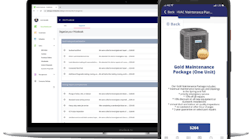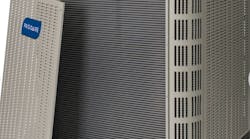After more than a year in the works, the Department of Energy (DOE) in November released a Notice of Proposed Rulemaking outlining the elements of an enforcement plan for regional standards for residential central air conditioners. And just as it goes into effect, there may be other residential HVAC products with regional standards on the horizon.
In 2007, Congress granted DOE the authority to set regional minimum energy efficiency standards for residential furnaces, central air conditioners and heat pumps. In 2011, DOE issued a Final Rule implementing two standards (North and South) for residential non-weatherized and mobile home natural gas furnaces, along with three standards (North, Southeast and Southwest) for split system and single package central air conditioners. The minimum standards for heat pumps remained national.
The Final Rule was challenged in federal court and resolved through a 2014 settlement that threw out the standards for furnaces, but left intact the regional standards for central air conditioners. The settlement also directed the convention of a special working group of interested stakeholders to develop and submit to DOE an appropriate enforcement scheme for the regional standards. Unfortunately, it took more than a year for DOE to review and release that plan, missing the Jan. 1, 2015, compliance date for the regional standards.
Under regional standards for central air conditioners that took effect on Jan. 1, 2015, the minimum energy conservation standard for a split system central air conditioner is 13 SEER in the
North region, 14 SEER in the Southeast region, and 14 SEER and 12.2 EER for systems less than 45,000Btu/hour and 14 SEER and 11.7 EER for units greater than or equal to 45,000 Btu/ hour. The minimum standards for single package central air conditioners is 14 SEER in the North and Southeast regions, and 14 SEER and 11.0 EER in the Southwest region.
The enforcement plan working group spent a lot of time developing a plan that maximizes enforcement to catch the bad actors while limiting the regulatory burden on the compliant contractor. The enforcement plan has two basic tenets: prevent illegal installations from happening, and find and punish any individuals who are found to have violated the regional standards by tracing the offending equipment through the supply chain. The most likely violation would occur when a 13 SEER unit is installed outside the North region, so those units are the focus of the enforcement plan.
Changes on the Horizon
First, there will be changes to the familiar yellow Energy Guide labels that are found on the exterior of the condensing units, either on the box or the unit itself (but visible through the box). These will help anyone who touches the box, including the homeowner, to assess whether the unit is legal for install at the installation location.
New graphics and text will provide information about the regional standards and the minimum standards in each region. At the same time, manufacturers have already made changes to their processes and added a ruggedized label to the condensing units that alert that the equipment is not legal for install in a certain region. For example, condensing unit models tested and rated below 13 SEER would say, “This unit not intended for installation in the Southeast or Southwest regions.”
Second, new recordkeeping requirements for manufacturers, distributors and contractors will assist enforcement when a product has been installed illegally. These recordkeeping requirements apply to installations of central air conditioners (both split system and single package) that occur in the Southeast or Southwest states: Alabama, Arizona, Arkansas, California, Delaware, Florida, Georgia, Hawaii, Kentucky, Louisiana, Maryland, Mississippi, Nevada, New Mexico, North Carolina, Oklahoma, South Carolina, Tennessee, Texas, Virginia or in the District of Columbia.
For split-system central air conditioner condensing units, contractors will have to keep records listing the manufacturer name, model number, serial number, location of installation (including street address, city, state and zip code), date of installation, and party from whom the unit was purchased (including person’s name, full address and phone number).
For split-system central air conditioner indoor coils or air handlers (not including uncased coils sold as replacement parts), contractors will have to maintain the manufacturer name, model number, location of installation (including street address, city, state, and zip code), date of installation and party from whom the unit was purchased (including person’s name, full address and phone number).
For single-package central air conditioners, contractors will have to maintain the manufacturer name, model number, serial number, location of installation, date of installation and party from whom the unit was purchased.
Distributors are the link between the manufacturer and the contractor, so they face similar recordkeeping requirements, but with some twists. For split-system central air conditioner, distributors must maintain records of
the manufacturers, model and serial number of the outdoor unit. For single package units, distributors must keep records on the manufacturer, model and serial number. For all units, including cash and house account sales, distributors must record the date the unit was purchased from manufacturer, party from whom the unit was purchased, including all contact information, date unit was sold to dealer/ contractor, party to whom the unit was sold, including company or individual’s name, full address and phone number, and if delivered, delivery address.
Originally the requirements on distributors were to take effect on Nov. 30, 2015, but the NOPR delayed the compliance date until July 1, 2016.
Comments on this enforcement plan are due in January, and it’s expected the DOE will release a Final Rule sometime this first quarter. New rules would be effective 30 days later.
It took a long time to get to this point and industry stakeholders have wondered if regional standards overcomplicated the standards process and if it wouldn’t be better to go back to a single national standard, even if it was set at 14 or 15 SEER. Unfortunately, those days may be long gone. DOE has started to review these standards to see whether they should be increased again in 2021. Meanwhile, negotiations on setting new standards for furnaces have kept the door open for regional standards for those products as well. As problematic as they are, regional standards are likely here to stay.
Charlie McCrudden is vice president of government affairs for the Air Conditioning Contractors of America. Contact him at [email protected].








